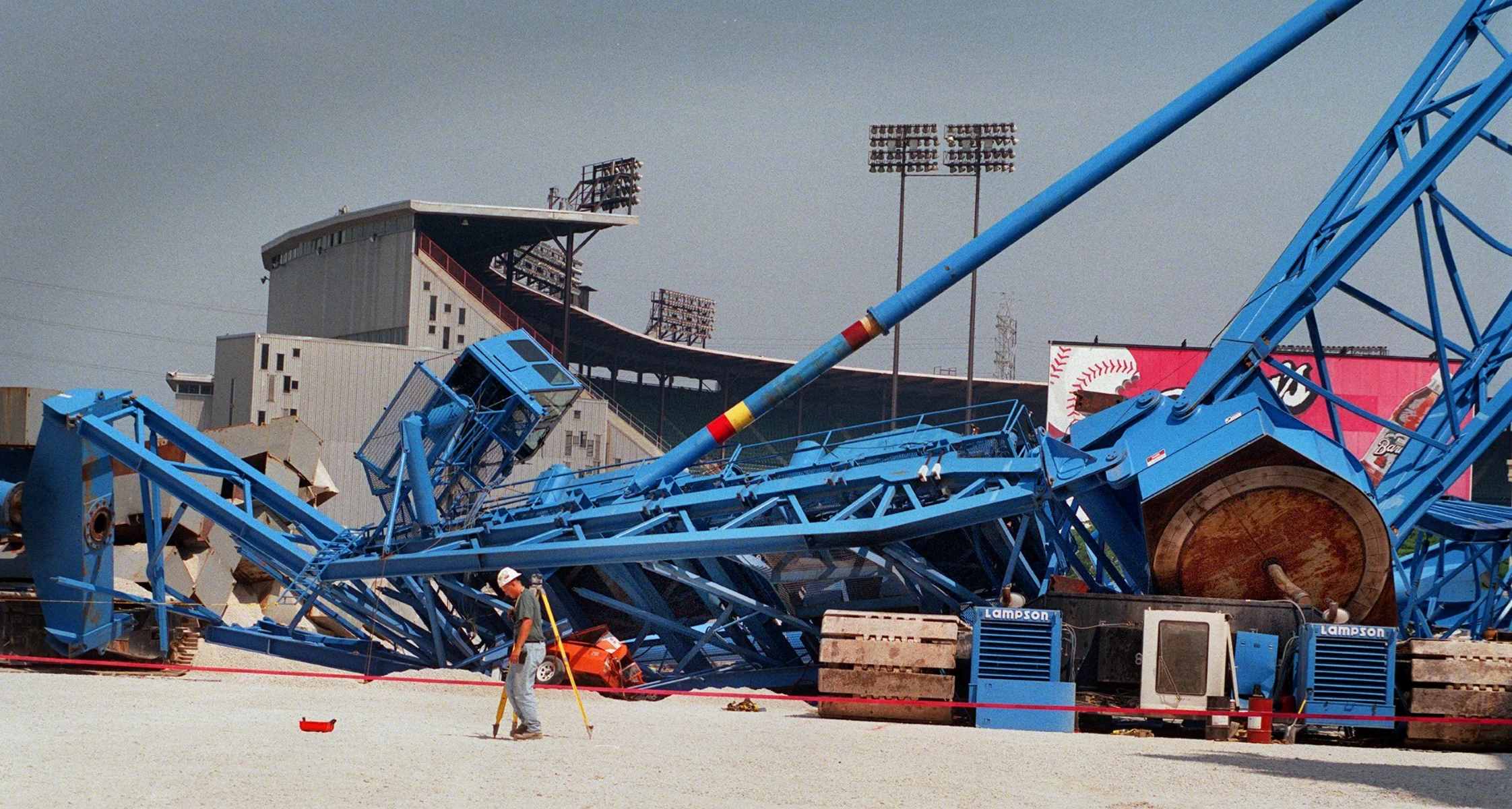
When it comes to construction accidents, the Big Blue Crane accident stands out as one of the most shocking and tragic events in recent memory. The incident, which occurred on July 18, 1999, during the construction of the Milwaukee Brewers’ Miller Park stadium, claimed the lives of three ironworkers and injured five others. This devastating accident sent shockwaves through the construction industry and raised questions about crane safety protocols.
In this article, we will delve into the details of the Big Blue Crane accident and provide 20 crucial facts that shed light on this tragic incident. From the factors leading up to the accident to the aftermath and its impact on crane safety regulations, we will explore every aspect of this unfortunate event. So, join us as we uncover the untold stories and lessons that emerged from the Big Blue Crane accident, offering an in-depth insight into a moment in history that forever changed the way the construction industry approaches crane safety.
Key Takeaways:
- The Big Blue Crane accident led to major improvements in crane safety, including better training for operators, stricter maintenance rules, and new technologies to prevent accidents.
- The tragedy sparked collaboration among construction experts, resulting in industry-wide safety standards and emergency response plans to protect workers and the public.
The Big Blue Crane is a towering construction crane used for heavy lifting.
The Big Blue Crane, also known as the Liebherr LR 13000, is a massive crane that stands tall on construction sites. With a maximum lifting capacity of 3,000 metric tons, it is designed to handle the most challenging lifting tasks in the construction industry.
The Big Blue Crane accident in Milwaukee, Wisconsin, occurred on July 14, 1999.
On that fateful day, tragedy struck when the Big Blue Crane collapsed during the construction of Miller Park Stadium, resulting in three fatalities and several injuries.
The accident was attributed to a phenomenon known as “wind gust lock.”
Wind gust lock is a condition where strong winds cause vibrations in the crane, leading to structural failure. In the case of the Big Blue Crane accident, wind gust lock resulted in the collapse of the crane.
The collapse of the Big Blue Crane caused significant damage to the construction site.
Parts of the crane crashed onto the roof and seating area of Miller Park Stadium, leading to delays in construction and costly repairs. The incident brought attention to the importance of proper safety measures in crane operations.
The Big Blue Crane accident remains one of the deadliest crane accidents in history.
The loss of three lives and the resulting injuries served as a major wake-up call for the construction industry, prompting a reevaluation of crane safety practices.
Following the accident, investigations were conducted to determine the cause.
Experts examined various factors, including wind speeds, crane design, maintenance procedures, and operator training. The findings helped improve safety guidelines and regulations for crane operations.
The Big Blue Crane accident highlighted the need for proper assessment of weather conditions during construction.
Intense winds can pose significant risks to cranes and construction sites. As a result, guidelines were developed to help crane operators assess weather conditions before initiating lifting operations.
The investigation into the accident revealed deficiencies in the crane’s maintenance and inspection procedures.
Proper maintenance and regular inspections are crucial for ensuring the safety of cranes. As a result of the accident, stricter maintenance protocols and inspection standards were implemented.
The Big Blue Crane accident led to advancements in crane safety technology.
As a result of the incident, new safety features such as wind speed monitors, load sensors, and improved crane stability systems were developed to enhance the safety of crane operations.
The tragedy prompted increased emphasis on crane operator training and certification.
The accident highlighted the importance of skilled and knowledgeable crane operators. As a result, stricter training requirements and certification processes were implemented to ensure operators are well-prepared to handle the complexities of crane operations.
The Big Blue Crane accident served as a catalyst for the establishment of industry-wide safety standards.
The incident prompted collaboration between industry stakeholders, leading to the development of comprehensive safety guidelines and regulations for crane operations. These standards aim to prevent accidents and protect the lives of workers and the public.
The Big Blue Crane accident raised public awareness of the potential dangers associated with construction sites.
The incident sparked discussions about safety measures, regulations, and liability in the construction industry. It served as a reminder of the importance of prioritizing worker safety in all construction projects.
The aftermath of the Big Blue Crane accident saw increased enforcement of crane safety regulations.
Regulatory bodies implemented stricter monitoring and inspection procedures to ensure compliance with safety guidelines. Regular audits and checks are now conducted to identify and address any potential safety risks.
The Big Blue Crane accident led to advancements in crane engineering and design.
The incident prompted engineers to develop innovative ways to enhance crane stability and reduce the risk of structural failures. The lessons learned from the accident have contributed to the evolution of crane technology.
The legacy of the Big Blue Crane accident continues to influence safety discussions in the construction industry.
Even years after the incident, the lessons learned from the tragedy serve as a reminder of the importance of proactive safety measures and continuous improvement in crane operations.
The Big Blue Crane accident brought attention to the vulnerability of construction sites to external factors.
Extreme weather conditions, including high winds, present significant challenges for crane operations and construction projects. The incident highlighted the need for comprehensive risk assessments and contingency plans to mitigate potential hazards.
The Big Blue Crane accident sparked changes in crane assembly and dismantling procedures.
The incident prompted the development of safer and more efficient methods for assembling and dismantling cranes, minimizing the risks associated with these critical stages of crane operations.
The accident prompted increased collaboration between crane manufacturers, construction companies, and regulatory bodies.
Stakeholders in the construction industry came together to share knowledge, expertise, and best practices to improve crane safety. This collective effort has been crucial in preventing similar accidents in the future.
The Big Blue Crane accident highlighted the importance of emergency response preparedness on construction sites.
Emergency protocols and procedures were reinforced to ensure swift and effective response in the event of a crane failure or other critical incidents. Regular drills and training sessions are now conducted to test and enhance emergency response capabilities.
The Big Blue Crane accident served as a call for continuous monitoring and evaluation of crane safety practices.
The construction industry recognized the importance of ongoing assessment to identify potential risks and implement necessary improvements. Continuous monitoring and evaluation processes have become integral to maintaining the highest standards of crane safety.
Conclusion
In conclusion, the Big Blue Crane accident is a tragic event that has garnered significant attention and raised awareness about construction site safety. It serves as a reminder of the importance of proper planning, adherence to safety protocols, and the need for constant vigilance in high-risk industries. The incident resulted in a number of lawsuits, investigations, and changes in safety regulations.
While the accident was devastating, it has led to increased measures to prevent similar incidents in the future. It highlights the need for thorough risk assessments, effective communication between all parties involved, and ongoing training to identify and mitigate potential risks. By learning from this incident and making proactive changes, we can strive to create safer work environments for all workers in the construction industry.
FAQs
1. What caused the Big Blue Crane accident?
The accident was primarily caused by a combination of human error, mechanical failure, and unforeseen circumstances. Investigations revealed that the crane operator attempted to lift a load that exceeded the crane’s capacity, leading to a collapse.
2. Were there any fatalities in the Big Blue Crane accident?
Yes, tragically, there were several fatalities as a result of the accident. The collapse of the crane caused the loss of lives and injuries to numerous workers at the construction site.
3. How has the Big Blue Crane accident impacted construction site safety regulations?
The accident prompted a thorough review of safety regulations in the construction industry. As a result, stricter guidelines were implemented to ensure proper crane operations, including load capacity assessments, ongoing equipment inspections, and mandatory operator training and certification.
4. What legal actions were taken after the Big Blue Crane accident?
The accident resulted in multiple legal actions, including personal injury claims filed by the affected workers and their families. Additionally, investigations were conducted to determine liability and ensure accountability for the accident.
5. Are there any lessons to be learned from the Big Blue Crane accident?
Yes, the accident highlights the crucial importance of proper planning, risk assessments, and adherence to safety protocols in the construction industry. It serves as a reminder that safety should always be a top priority to prevent similar accidents in the future.
Was this page helpful?
Our commitment to delivering trustworthy and engaging content is at the heart of what we do. Each fact on our site is contributed by real users like you, bringing a wealth of diverse insights and information. To ensure the highest standards of accuracy and reliability, our dedicated editors meticulously review each submission. This process guarantees that the facts we share are not only fascinating but also credible. Trust in our commitment to quality and authenticity as you explore and learn with us.


